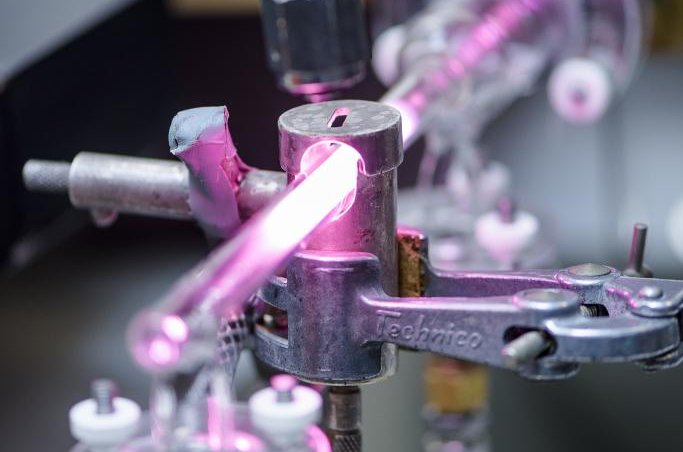In their search for life's building blocks, researchers replicated the conditions of outer space, including the presence of high-energy radiation. Photo by RUB
April 10 (UPI) -- Scientists have long theorized comets delivered key ingredients for life on Earth. Scientists in Germany are currently testing the theory.
Researchers at Ruhr-University Bochum are replicating the conditions of outer space to test whether cometary chemical reactions could have yielded complex molecules like amino acids, the building blocks of proteins.
The average comet hosts all of the ingredients necessary for amino acid construction -- oxygen, hydrogen, nitrogen and carbon. Scientists suspect the molecule hydroxylamine, NH2-OH, could have served as an amino acid precursor. But researchers haven't been able to confirm the molecule's presence on a comet flying through space.
Scientists have studied space-based chemical reactions in the gas phase, but researchers at RUB are interested in the chemical reactions in the condensed phases, solids and liquids, on the surfaces of comets.
A pair of radicals are likely to form a simple, direct bond when meeting in a gaseous environment.
"However, if we observe the reactions in the ice, anything is possible," researcher Teddy Butscher said in a news release.
Researchers set up experiments to see whether simple molecules could evolve complex molecules like hydroxylamine in ice. Researchers supplied the ice with ammonia and oxygen and subjected the sample to high-energy radiation. Infrared spectroscopy helped scientists track chemical reactions inside the ice. Specific vibrations can reveal certain molecules.
At first, scientists were unable to locate hydroxylamine. The chorus of chemical vibrations from other molecules drowned out its signature. But when researchers heated the sample, sublimating other molecules, hydroxylamine's signature surfaced.
"I think that people had not been searching for it using the right methods until now," said researcher Yetsedaw Tsegaw.
The research is a promising first step in explaining the origins of life, but RUB scientists are quick to point out the impossibility of proving how life began. Researchers say they can only provide plausible theories backed by thorough research and scientific evidence.
"The creation of life occurred over a timescale that we cannot simulate," said researcher Wolfram Sander. "Even though our research is of fundamental importance, it will not be able to provide a definitive answer to this question."















